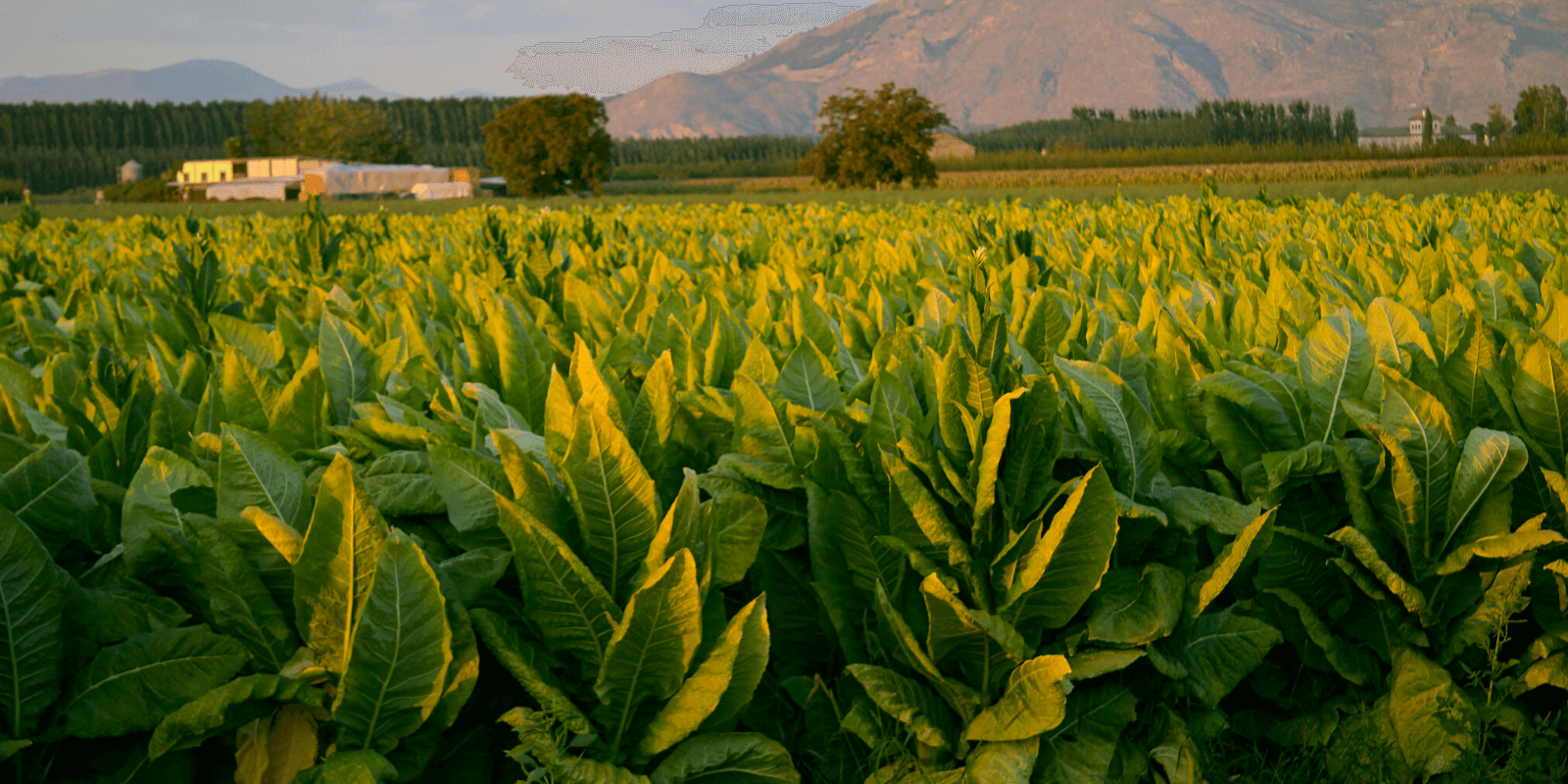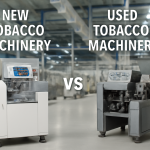Sustainable production practices have become a key focus in various industries, including tobacco. As consumers and regulators alike grow increasingly concerned about environmental and health impacts, tobacco producers are seeking ways to reduce their carbon footprint, minimize waste, and improve efficiency while maintaining the quality of their products. In this article, we will explore the challenges, solutions, and best practices involved in creating sustainable tobacco production processes.
Challenges in Sustainable Tobacco Production
While the concept of sustainability in tobacco production is gaining traction, it comes with its own set of challenges. These challenges can be broken down into several key areas:
1. Environmental Impact
Tobacco farming and processing are known to be resource-intensive. From pesticide use to deforestation for growing tobacco, the environmental impact is significant. Additionally, the waste generated during the production and manufacturing processes poses a challenge for sustainability efforts.
2. Energy Consumption
Tobacco processing requires considerable energy, especially during steps like drying and curing. Traditional methods often rely on fossil fuels, which can increase the carbon footprint of the industry.
3. Waste Generation
Tobacco production generates large amounts of waste, such as tobacco stems, leaves, and packaging materials. Recycling and proper disposal of these materials have proven difficult for many tobacco manufacturers.
4. Regulatory Pressure
Governments are increasingly imposing stricter environmental and health regulations on the tobacco industry. These regulations can create compliance challenges and force businesses to adopt costly, sustainable technologies and practices.
5. Public Perception
The tobacco industry is often viewed negatively due to its association with health risks. Integrating sustainable practices can help improve the industry’s image, but it requires careful communication and significant investment.
Solutions for Sustainable Tobacco Production
While the challenges are significant, there are several promising solutions that can help tobacco producers make their operations more sustainable.
1. Sustainable Farming Practices
Tobacco farmers are adopting sustainable agricultural techniques, including crop rotation, organic farming methods, and integrated pest management. These practices reduce the reliance on harmful chemicals, improve soil health, and decrease environmental degradation.
2. Energy Efficiency
By investing in energy-efficient technologies, tobacco manufacturers can significantly reduce their energy consumption. Renewable energy sources, such as solar and wind, can be integrated into production facilities to reduce reliance on fossil fuels.
3. Waste Reduction and Recycling
Tobacco manufacturers can implement recycling programs and find ways to reuse waste generated during production. For example, tobacco stems can be repurposed for other products, while packaging materials can be sourced from recycled or biodegradable materials.
4. Eco-friendly Packaging
Packaging materials in the tobacco industry are a major contributor to waste. By switching to eco-friendly, biodegradable, or recyclable packaging, tobacco companies can reduce their environmental footprint. Many companies are already exploring alternatives to plastic, such as paper-based packaging or plant-based plastics.
5. Sustainable Tobacco Products
Tobacco companies can also focus on producing more sustainable products. This includes reducing the use of harmful chemicals in cigarettes and offering alternatives such as heat-not-burn products, which generate fewer emissions than traditional cigarettes.
6. Circular Economy Models
Adopting a circular economy approach is one of the most effective ways to promote sustainability. This model focuses on designing products and processes that minimize waste and encourage the reuse and recycling of materials. Tobacco companies can adopt these principles by recycling tobacco waste, reducing emissions, and minimizing resource consumption.
7. Collaboration with NGOs and Regulatory Bodies
Collaboration with NGOs, government organizations, and regulatory bodies can help tobacco companies better understand and implement sustainability initiatives. By working together, these groups can set industry standards for sustainable practices, advocate for better policies, and share knowledge and resources.
Best Practices for Implementing Sustainability in Tobacco Production
Adopting best practices is essential for ensuring that sustainability efforts are effective and long-lasting. Below are some best practices that tobacco companies can integrate into their production processes.
1. Commitment to Sustainable Sourcing
Tobacco producers should prioritize sourcing tobacco from farms that use sustainable practices. This includes working with certified organic tobacco growers and supporting farming communities in adopting more eco-friendly practices.
2. Investing in R&D
Research and development (R&D) play a crucial role in driving sustainability in tobacco production. Tobacco companies should invest in R&D to develop new technologies, improve production methods, and create sustainable products that align with consumer demands.
3. Implementing Green Manufacturing Practices
Tobacco manufacturers should strive to integrate green manufacturing practices into their operations. This includes optimizing water and energy use, reducing emissions, and using cleaner technologies to ensure that production processes are as environmentally friendly as possible.
4. Transparent Reporting and Accountability
Transparency is crucial for building trust with consumers, regulators, and the general public. Tobacco companies should openly report their sustainability efforts, including the reduction of carbon emissions, energy use, and waste. Regular sustainability audits and performance assessments can help track progress.
5. Consumer Education and Awareness
Educating consumers about the sustainability initiatives within the tobacco industry is essential. Companies can use marketing campaigns, packaging labels, and online platforms to communicate their efforts in reducing environmental impact and promoting eco-friendly practices.
The Role of Technology in Sustainable Tobacco Production
Technology plays a pivotal role in creating sustainable tobacco production systems. The use of data analytics, AI, and automation in the industry can help optimize production processes, reduce energy consumption, and minimize waste. Additionally, technology allows for greater precision in farming, leading to more efficient use of resources and improved crop yields.
1. AI in Predictive Farming
Using artificial intelligence in agriculture allows for predictive modeling of weather conditions, pest outbreaks, and crop health. This helps farmers apply resources only when necessary, reducing waste and optimizing yields.
2. Smart Manufacturing Systems
Smart factories equipped with IoT sensors and AI systems enable manufacturers to track energy usage, production rates, and equipment performance. This data-driven approach allows companies to optimize their operations for energy efficiency and resource conservation.
3. Waste-to-Energy Technologies
Some tobacco manufacturers are adopting waste-to-energy technologies that convert production waste into renewable energy. This helps to reduce the reliance on fossil fuels and decrease the overall environmental impact of tobacco manufacturing.
Conclusion: A Sustainable Future for Tobacco Production
The tobacco industry faces significant challenges when it comes to sustainability. However, with the right solutions and practices, it is possible to reduce the environmental impact and improve operational efficiency. By adopting sustainable farming practices, implementing energy-efficient technologies, reducing waste, and working collaboratively with stakeholders, tobacco companies can take significant steps towards a more sustainable future.
For the tobacco industry to thrive in a rapidly changing world, it will need to balance economic goals with environmental and social responsibility. By embracing sustainability, tobacco companies can not only improve their operations but also meet the growing demand for environmentally responsible products.





